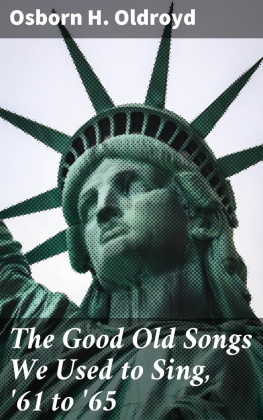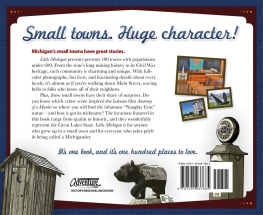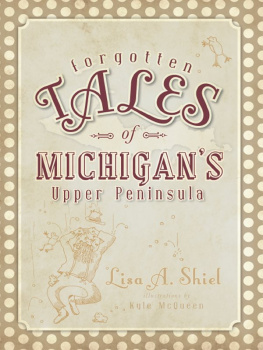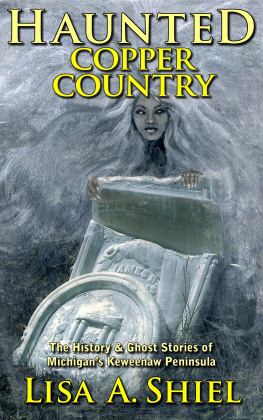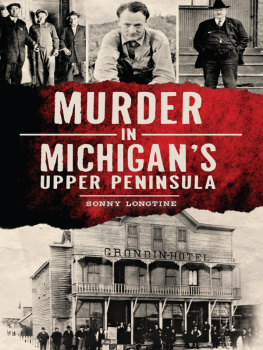The publication of this volume in a freely accessible digital format has been made possible by a major grant from the National Endowment for the Humanities and the Mellon Foundation through their Humanities Open Book Program.
Copyright 2002 by Wayne State University Press, Detroit, Michigan 48201. All material in this work, except as identified below, is licensed under a Creative Commons Attribution-NonCommercial 3.0 United States License. To view a copy of this license, visit https://creativecommons.org/licenses/by-nc/3.0/us/.
All material not licensed under a Creative Commons license is all rights reserved. Permission must be obtained from the copyright owner to use this material.
Library of Congress Cataloging-in-Publication Data
Osborn, Chase S. (Chase Salmon), b. 1860
The iron hunter / Chase S. Osborn; with an introduction by Robert M. Warner. p. cm.(Great Lakes books)
Originally published: New York : Macmillan, 1919.
ISBN 0-8143-3039-8 (pbk.: alk. paper); ISBN 978-0-8143-3585-7 (ebook)
1. Osborn, Chase S. (Chase Salmon), b. 1860. 2. Iron mines and
miningMichiganHistory19th century. 3. Iron mines and miningMichiganHistory20th century. 4. PoliticiansUnited States
Biography. I. Title. II. Series.
TN140.08 073 2002
324.2092dc21
[B] 2002016751
http://wsupress.wayne.edu/
INTRODUCTION
Chase S. Osborn was without doubt one of Michigans all-time most interesting citizens. Colorful, outspoken, and unconventional, he enlivened the Michigan political scene for many of his ninety years.
Fortunately, this Michigan eccentric left us a detailed portrait of himself through his amazingly complete collection of personal, business, and professional correspondence as well as numerous volumes of scrapbooks, diaries, and photographs. A newspaperman himself, he was meticulously covered by the press, thus adding extensive clipping files to his already voluminous collection of personal and professional memorabilia. These rich holdings, along with collateral materials relating to Osborn, are carefully preserved in the Bentley Historical Library at the University of Michigan and are supplemented by a smaller collection of his papers in the State Archives at Lansing.
Adding another dimension to our knowledge of Chase Salmon Osborn is his autobiography, The Iron Hunter, published in May 1919 and, after being out of print for over eighty years, now made available by the Wayne State University Press. The Iron Hunter gives us further insight into Osborns colorful personality and his significant career, revealing much of his independent spirit, high energy, unconventional values, and eccentricity. Chase Osborn was indeed something of a character. He fit no regular mold, and he marched to his own drumbeat. This book gives us a vivid, personal portrait of one of Michigans most unconventional citizens.
In 1910, Osborn was elected to Michigans highest executive office. On January 1, 1911, he became governor of the state, although since January 1 was a Sunday, he was not sworn in until the following day. His governorship lasted only two years, but his brief term of office was significant since it came in the midst of a movement for reform which was spreading throughout the United States. Labeled the Progressive Movement by historians, it provided the perfect milieu for this flamboyant, reformminded governor.
The Iron Hunter discusses Osborns political career and the background for his political involvement. It depicts the corruption and manipulation of the political process, a game in which, early in his career, he was a participant. As his career developed, however, he became more public spirited and more of a reformer. Osborn tells of his political adventures, his losses as well as his victories. In the loss category were an unsuccessful race for the U.S. Congress and a contest to succeed Hazen S. Pingree as governor of Michigan. On the win side, he was appointed state game and fish warden, state railroad commissioner, and regent of the University of Michigan, where he played a role in selecting President Harry B. Hutchins. Osborn also tells of his connection with U.S. senator and cabinet member from Michigan, Russel A. Alger, and covers the reform administration of Hazen Pingree.
Yet of the most interest is his account of his race for the governorship in 1910. He ran a flamboyant and innovative campaign, visiting every county of Michigans Lower Peninsula by automobile, the first such extensive use of the automobile in the state. His vigorous campaign brought him victory, and he became the states first (and to this date, only) governor from the Upper Peninsula.
One can only wish, however, that Osborn had described his governorship as vividly as he describes his campaign. He discusses the highlights of his administration, but leaves the reader wishing for more information on his frequent and fierce battles with his political and legislative foes. Still, he does, as one would expect of any politician, highlight his triumphs. While in the governors office he eliminated Michigans deficit, ended corruption by appointing strong, civic-minded civil servants, and produced a strong body of progressive, reform-minded legislation which included the states first workmens compensation law and a reform of the electoral process.
A particularly interesting and significant section summarizes Osborns influential role in the 1912 national election, where he exercised leadership in persuading former president Theodore Roosevelt to enter the contest. He subsequently went on the stump for him in his unsuccessful campaign, which led to the defeat of William Howard Taft and the election of Woodrow Wilson. Osborn covers his own race for a second term as governor in 1914, but does not explain that his defeat was largely caused by the split in the Republican Party by the Bull Moose faction, a break he had tried to prevent.
Politics, however, is only one theme of this autobiography. Osborn relives for us his early Indiana boyhood, where he learned to cradle, rake, bind, mow, stack hay and grain, load hay, rive clapboards, split rails and chop cordwood. At the same time, he managed to read just about everything I could get my hands on.... At an early age, too early, I had read Grays Anatomy, Daltons physiology, Thomas on Diseases of Women and Children, pages of Dunglisons medical dictionary. Gullys and also Shews hydropathy.
Yet neither his physical labors nor his intellectual pursuits could quell the wanderlust in the young Osborn, for I kept at running away two or three times a year until I succeeded.... My longest runaway absence was when I went into the wild Michigan lumber woods.... I spent a winter in the camps as a cookee and chore boy.
He eventually wandered back to his native Indiana, however, and at the age of fourteen was admitted to Purdue University. After three years there he vowed to leave school for good. He took to the road again, setting out to walk to Chicago, the mecca of many Hoosier lads. He arrived with fifteen cents to his name and went to work as a potato peeler in a restaurant. Chicago did not turn out to be the Promised Land, so he walked on to Milwaukee, which offered him no more than Chicago. He walked on to Green Bay, where he drove a coal wagon by day and unloaded ships by night. His luck changed when he got a job soliciting subscriptions for a newspaper and then eventually became a reporter, first in Milwaukee and then in Florence, Wisconsin.




